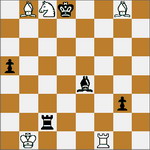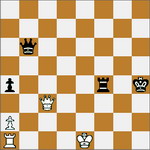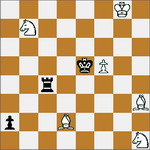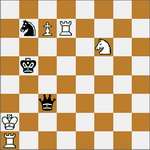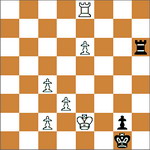PHOTO REPORTS FROM 56thWCCC - 2013
BATUMI, GEORGIA
Batumi Sights
GO TO -day1st, day2nd, day3rd, day4th, day5th, day6th day7th New
SOME INFORMATIONS ABOUT BATUMI
Early history
Batumi is located on the site of the ancient Greek colony in Colchis called Bathus or Bathys – derived from the Greek phrase bathus limen or bathys limin meaning "deep harbour". Under Hadrian (r. 117–138 AD), it was converted into a fortified Roman port later deserted for the fortress of Petra founded in the times of Justinian I (r. 527–565). Garrisoned by the Roman-Byzantine forces, it was formally a possession of the kingdom of Lazica until being occupied briefly by the Arabs who did not hold it; in the 9th century it formed part of the Bagratid monarchy of Tao-Klarjeti and at the close of the 10th century of the unified kingdom of Georgia which succeeded it.
From 1010, it was governed by the eristavi (viceroy) of the king of Georgia. In the late 15th century, after the disintegration of the Georgian kingdom, Batumi passed to the princes (mtavari) of Guria, a western Georgian principality under the sovereignty of the kings of Imereti. A curious incident occurred in 1444 when the Burgundian flotilla, after a failed crusade against the Ottoman Empire, penetrated the Black Sea and engaged in piracy along its eastern coastline until the Burgundians under the knight Geoffroy de Thoisy were ambushed during their landing raid at the port of Vaty, as Europeans then knew Batumi. De Thoisy was taken captive and released through the mediation of the emperor John IV of Trebizond.
In the 15th century in the reign of the prince Kakhaber Gurieli, the Ottoman Turks conquered the town and its district but did not hold them. They returned to it in force a century later and inflicted a decisive defeat on the Georgian armies at Sokhoista. Batumi was recaptured by the Georgians several times, first in 1564 by prince Rostom Gurieli, who lost it soon afterwards, and again in 1609 by Mamia Gurieli. In 1723 Batumi again became part of the Ottoman Empire. With the Turkish conquest the Islamisation of the hitherto Christian region began, but was terminated and to a great degree reversed, after the area was re-annexed to Russian Imperial Georgia in the mid 19th century.
Present day
Batumi today is one of the main port cities of Georgia. It has the capacity for 80,000-tonne tankers to take materials such as oil which is shipped through Georgia from Central Asia. Additionally the city exports regional agricultural products. Since 1995 the freight conversion of the port has constantly risen, with an approximate 8 million tonnes in 2001. The annual revenue from the port is estimated at between $200 million and $300 million.
Since the change of power in Ajara, Batumi has attracted several international investors with real estate prices in the city trebling since 2001. Kazakh investors have reportedly invested $100 million to purchase more than 20 hotels in the Ajara region of Georgia. Several new hotels opened after 2009, first the Sheraton in 2010 and the Radisson Blu in 2011. The Trump-tower and the Kempinski will open 2013.
Batumi was also host to the Russian 12th Military Base. Following the Rose Revolution, the central government pushed for the removal of these forces, and in 2005 an agreement with Moscow was reached. According to the agreement, the process of withdrawal was planned to be completed in the course of 2008, but the Batumi base was officially handed over to Georgia on November 13, 2007, ahead of planned schedule.[3]
In July 2007, the seat of the Constitutional Court of Georgia was moved from Tbilisi to Batumi in an attempt to further facilitate the regional development.[4]
SOME INFORMATIONS ABOUT GEORGIA
Georgia(Georgian: საქართველო, sak’art’velo is a sovereign state in the Caucasus region of Eurasia. Located at the crossroads of Western Asia and Eastern Europe,[7] it is bounded to the west by the Black Sea, to the north by Russia, to the southwest by Turkey, to the south by Armenia, and to the southeast by Azerbaijan. Georgia covers a territory of 69,700 km² and its population is almost 4.7 million. Georgia is a unitary, semi-presidential republic, with the government elected through a representative democracy.
During the classical era independent kingdoms became established in what is now Georgia. The kingdoms of Colchis and Iberia adopted Christianity in the early 4th century. A unified Georgia reached the peak of its political and economic strength during the reign of King David IV and Queen Tamar in the 11th–12th centuries. At the beginning of the 19th century, Georgia was annexed by the Russian Empire.[8] After a brief period of independence following the Russian Revolution of 1917, Georgia was annexed by the Soviet Union in 1921, becoming the Georgian Soviet Socialist Republic. After independence in 1991, post-communist Georgia suffered from civil unrest and economic crisis for most of the 1990s. This lasted until the Rose Revolution of 2003, after which the new government introduced democratic and economic reforms.[9]
Georgia is a member of the Council of Europe and the GUAM Organization for Democracy and Economic Development. It contains two de facto independent regions, Abkhazia and South Ossetia, which gained limited international recognition after the 2008 South Ossetia war between Georgia and Russia. Georgia still considers the regions to be part of its sovereign territory.























































